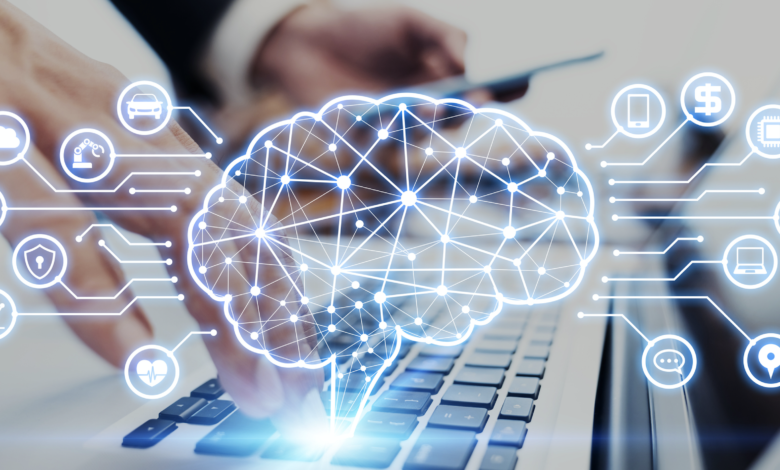
For many years the term Business Intelligence (BI) – much like AI – has been something of a sweeping term, open to considerable interpretation – and sometimes confusion. As with AI, the term BI was born during a time when business and technology were at completely different stages of evolution. Finally, the pieces are in place for both to fulfill their original visions. In the case of our software, AI is enabling BI to keep a very old promise.
BI’s origin can be traced back to 1865, when Richard Millar, the author of the “Cyclopædia of Commercial and Business Anecdotes”, first introduced the phrase. He used it to describe how Sir Henry Furnese, a banker, profited from information by gathering and acting on it before his competition. This definition has held up surprisingly well and remains the promise of BI in modern times.
BI’s parallels with AI don’t end with a comparison of terminology; in technology terms at least, they are roughly the same vintage. In 1958, a data scientist at IBM used Millar’s definition of BI as the basis for a software concept. It’s probably no coincidence that this happened shortly after the RAND corporation presented the first AI programme in 1956.
Though introduced in the late 60s, even today, many BI systems remain far too complex for average businesspeople to gain the profit and competitive advantage that Millar originally proposed. Most systems still rely on IT or data experts with highly specialised skills to translate data from multiple, disjointed sources into actionable ‘intelligence’. Even finding existing reports and dashboards is difficult in most organisations. Hence the stubborn stickiness of spreadsheets in the workplace, and all the chaos they create.
Fortunately, many hyped technologies eventually grow into their visions. This is certainly happening with AI and is finally starting to happen in the BI world too. BI software is finally getting easy and fast enough for business people to access and use to make key decisions. This is due to huge advances in user interface design, data storage (especially cloud) infrastructure and declining costs. Again, another neat parallel with AI, which is currently in a ‘golden age’.
However, just as BI software at long last grew into its original vision, people’s expectations raced well beyond it. We now live in an “I want it now” world of instant information gratification. Whereas 10 years ago when BI vendors talked about ‘real time’ most understood and accepted that could actually mean at least a few minutes, hours, sometimes days. Today real-time means NOW! We have consumer apps like Google, Uber, and Netflix to thank for this drive for immediacy.
This “consumerization” of business applications also raises users’ expectations for personalization. People don’t just want to locate data, dashboards and reports immediately; they also increasingly want this information to find them. The average business user often doesn’t always know the right questions to ask of data; better to have a smart system that steers them towards information that’s relevant to their roles, preferences, and access rights.
The stubborn chasm between users’ expectations of BI and the experience explains why BI adoption flatlined for a decade at roughly 20% (Source: Gartner). It simply took too long for business users working at the coalface to get what they needed. And often when they finally did manage to get IT or data experts to find the data they needed, it was out of date or not quite right. Also: not all BI or analytics tools are right for every business use. That’s why most enterprises have multiple BI tools (and often multiple versions of each) in use. Gartner reports that enterprises have an average of 3.8, but we have found this to be considerably higher in our customer base – typically in the double digits.
Less obvious and arguably more important than adoption itself is usage frequency. In a truly data-driven, data-literate organization, you want people using BI to make decisions every day, throughout the day.
Now for some good news. When it comes to making analytics and BI software accessible, fast, usable, and personal, nothing has been more truly ‘game-changing’ than AI. As reported in this journal, we’ve recently launched the industry’s first enterprise portal that puts a consumer face on any popular Analytics and BI tool – and other business information systems – making these as easy to access and navigate as Amazon, Netflix, or Spotify – all thanks to AI’s machine learning.
In the same way that these consumer apps push out their products, movies, and music based on customer preferences, our portal uses machine learning to do the same for business information. Users are shown reports, dashboards, data, and other information in “swim lanes” that lets them find what they need without having to search, or even know what they’re looking for. Also, users get “previews” as they hover over files so you can get a taste of what’s in them before they decide to open.
The kind of consumer experience was completely unheard of in BI until now – all thanks to AI. And the benefits of this to organizations are potentially massive. It helps people to do their jobs more effectively, collaboratively, and enjoyably. Organisations benefit hugely from the collective effect of all their people making smarter, more profitable decisions. In short, it finally means that real business intelligence – as it was originally conceived in 1865 – has well and truly arrived.




